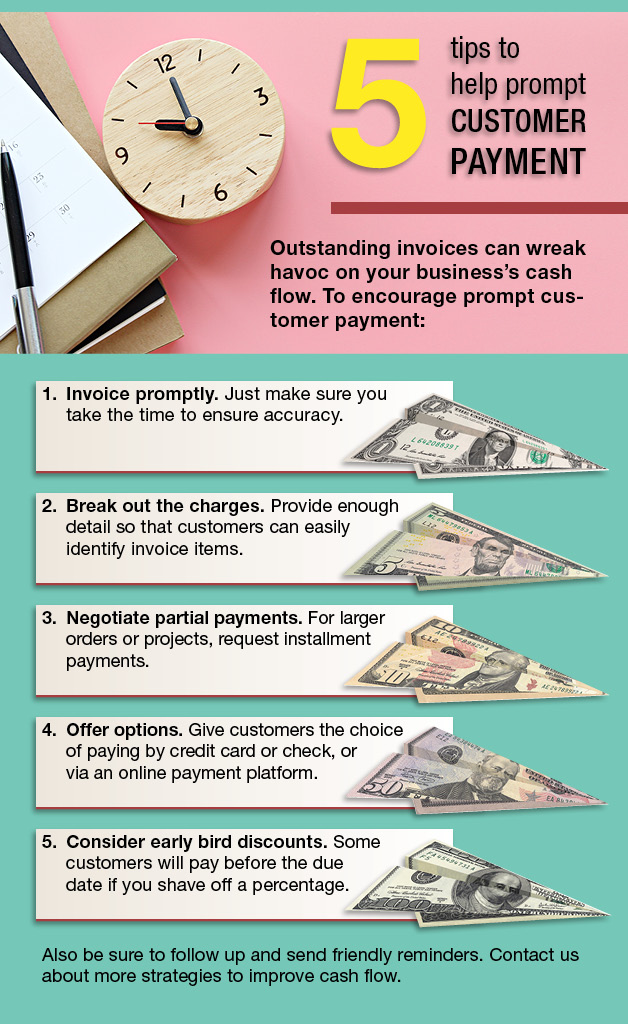
President Trump signed four executive actions, including a Presidential Memorandum to defer the employee’s portion of Social Security taxes for some people. These actions were taken in an effort to offer more relief due to the COVID-19 pandemic.
The action only defers the taxes, which means they’ll have to be paid in the future. However, the action directs the U.S. Treasury Secretary to “explore avenues, including legislation, to eliminate the obligation to pay the taxes deferred pursuant to the implementation of this memorandum.”
Legislative history
On March 18, 2020, President Trump signed into law the Families First Coronavirus Response Act. A short time later, President Trump signed into law the Coronavirus, Aid, Relief and Economic Security (CARES) Act. Both laws contain economic relief provisions for employers and workers affected by the COVID-19 crisis.
The CARES Act allows employers to defer paying their portion of Social Security taxes through December 31, 2020. All 2020 deferred amounts are due in two equal installments — one at the end of 2021 and the other at the end of 2022.
New bill talks fall apart
Discussions of another COVID-19 stimulus bill between Democratic leaders and White House officials broke down in early August. As a result, President Trump signed the memorandum that provides a payroll tax deferral for many — but not all — employees.
The memorandum directs the U.S. Treasury Secretary to defer withholding, deposit and payment of the tax on wages or compensation, as applicable, paid during the period of September 1, 2020, through December 31, 2020. This means that the employee’s share of Social Security tax will be deferred for that time period.
However, the memorandum contains the following two conditions:
- The deferral is available with respect to any employee, the amount of whose wages or compensation, as applicable, payable during any biweekly pay period generally is less than $4,000, calculated on a pretax basis, or the equivalent amount with respect to other pay periods; and
- Amounts will be deferred without any penalties, interest, additional amount, or addition to the tax.
The Treasury Secretary was ordered to provide guidance to implement the memorandum.
Legal authority
The memorandum (and the other executive actions signed on August 8) note that they’ll be implemented consistent with applicable law. However, some are questioning President Trump’s legal ability to implement the employee Social Security tax deferral.
Employer questions
Employers have questions and concerns about the payroll tax deferral. For example, since this is only a deferral, will employers have to withhold more taxes from employees’ paychecks to pay the taxes back, beginning January 1, 2021? Without a law from Congress to actually forgive the taxes, will employers be liable for paying them back? What if employers can’t get their payroll software changed in time for the September 1 start of the deferral? Are employers and employees required to take part in the payroll tax deferral or is it optional?
Contact us if you have questions about how to proceed. And stay tuned for more details about this action and any legislation that may pass soon.
You’re probably aware of the 100% bonus depreciation tax break that’s available for a wide range of qualifying property. Here are five important points to be aware of when it comes to this powerful tax-saving tool.
1. Bonus depreciation is scheduled to phase out
Under current law, 100% bonus depreciation will be phased out in steps for property placed in service in calendar years 2023 through 2027. Thus, an 80% rate will apply to property placed in service in 2023, 60% in 2024, 40% in 2025, and 20% in 2026, and a 0% rate will apply in 2027 and later years.
For certain aircraft (generally, company planes) and for the pre-January 1, 2027 costs of certain property with a long production period, the phaseout is scheduled to take place a year later, from 2024 to 2028.
Of course, Congress could pass legislation to extend or revise the above rules.
2. Bonus depreciation is available for new and most used property
In the past, used property didn’t qualify. It currently qualifies unless:
- The taxpayer previously used the property and
- The property was acquired in certain forbidden transactions (generally acquisitions that are tax free or from a related person or entity).
3. Taxpayers should sometimes make the election to turn down bonus depreciation
Taxpayers can elect to reject bonus depreciation for one or more classes of property. The election out may be useful for sole proprietorships, and business entities taxed under the rules for partnerships and S corporations, that want to prevent “wasting” depreciation deductions by applying them against lower-bracket income in the year property was placed in service — instead of against anticipated higher bracket income in later years.
Note that business entities taxed as “regular” corporations (in other words, non-S corporations) are taxed at a flat rate.
4. Bonus depreciation is available for certain building improvements
Before the 2017 Tax Cuts and Jobs Act (TCJA), bonus depreciation was available for two types of real property:
- Land improvements other than buildings, for example fencing and parking lots, and
- “Qualified improvement property,” a broad category of internal improvements made to non-residential buildings after the buildings are placed in service.
The TCJA inadvertently eliminated bonus depreciation for qualified improvement property.
However, the 2020 Coronavirus Aid, Relief and Economic Security Act (CARES Act) made a retroactive technical correction to the TCJA. The correction makes qualified improvement property placed in service after December 31, 2017, eligible for bonus depreciation.
5. 100% bonus depreciation has reduced the importance of “Section 179 expensing”
If you own a smaller business, you’ve likely benefited from Sec. 179 expensing. This is an elective benefit that — subject to dollar limits — allows an immediate deduction of the cost of equipment, machinery, off-the-shelf computer software and some building improvements. Sec. 179 has been enhanced by the TCJA, but the availability of 100% bonus depreciation is economically equivalent and has greatly reduced the cases in which Sec. 179 expensing is useful.
We can help
The above discussion touches only on some major aspects of bonus depreciation. This is a complex area with tax implications for transactions other than simple asset acquisitions. Contact us if you have any questions about how to proceed in your situation.
The Coronavirus Aid, Relief and Economic Security (CARES) Act made changes to excess business losses. This includes some changes that are retroactive and there may be opportunities for some businesses to file amended tax returns.
If you hold an interest in a business, or may do so in the future, here is more information about the changes.
Deferral of the excess business loss limits
The Tax Cuts and Jobs Act (TCJA) provided that net tax losses from active businesses in excess of an inflation-adjusted $500,000 for joint filers, or an inflation-adjusted $250,000 for other covered taxpayers, are to be treated as net operating loss (NOL) carryforwards in the following tax year. The covered taxpayers are individuals, estates and trusts that own businesses directly or as partners in a partnership or shareholders in an S corporation.
The $500,000 and $250,000 limits, which are adjusted for inflation for tax years beginning after calendar year 2018, were scheduled under the TCJA to apply to tax years beginning in calendar years 2018 through 2025. But the CARES Act has retroactively postponed the limits so that they now apply to tax years beginning in calendar years 2021 through 2025.
The postponement means that you may be able to amend:
- Any filed 2018 tax returns that reflected a disallowed excess business loss (to allow the loss in 2018) and
- Any filed 2019 tax returns that reflect a disallowed 2019 loss and/or a carryover of a disallowed 2018 loss (to allow the 2019 loss and/or eliminate the carryover).
Note that the excess business loss limits also don’t apply to tax years that begin in 2020. Thus, such a 2020 year can be a window to start a business with large up-front-deductible items (for example capital items that can be 100% deducted under bonus depreciation or other provisions) and be able to offset the resulting net losses from the business against investment income or income from employment (see below).
Changes to the excess business loss limits
The CARES Act made several retroactive corrections to the excess business loss rules as they were originally stated in the 2017 TCJA.
Most importantly, the CARES Act clarified that deductions, gross income or gain attributable to employment aren’t taken into account in calculating an excess business loss. This means that excess business losses can’t shelter either net taxable investment income or net taxable employment income. Be aware of that if you’re planning a start-up that will begin to generate, or will still be generating, excess business losses in 2021.
Another change provides that an excess business loss is taken into account in determining any NOL carryover but isn’t automatically carried forward to the next year. And a generally beneficial change states that excess business losses don’t include any deduction under the tax code provisions involving the NOL deduction or the qualified business income deduction that effectively reduces income taxes on many businesses.
And because capital losses of non-corporations can’t offset ordinary income under the NOL rules:
- Capital loss deductions aren’t taken into account in computing the excess business loss and
- The amount of capital gain taken into account in computing the loss can’t exceed the lesser of capital gain net income from a trade or business or capital gain net income.
Contact us with any questions you have about this or other tax matters.
Here are some of the key tax-related deadlines affecting businesses and other employers during the fourth quarter of 2020. Keep in mind that this list isn’t all-inclusive, so there may be additional deadlines that apply to you. Contact us to ensure you’re meeting all applicable deadlines and to learn more about the filing requirements.
Thursday, October 15
- If a calendar-year C corporation that filed an automatic six-month extension:
- File a 2019 income tax return (Form 1120) and pay any tax, interest and penalties due.
- Make contributions for 2019 to certain employer-sponsored retirement plans.
Monday, November 2
- Report income tax withholding and FICA taxes for third quarter 2020 (Form 941) and pay any tax due. (See exception below under “November 10.”)
Tuesday, November 10
- Report income tax withholding and FICA taxes for third quarter 2020 (Form 941), if you deposited on time (and in full) all of the associated taxes due.
Tuesday, December 15
- If a calendar-year C corporation, pay the fourth installment of 2020 estimated income taxes.
Thursday, December 31
- Establish a retirement plan for 2020 (generally other than a SIMPLE, a Safe-Harbor 401(k) or a SEP).
October 13
Employees – who work for tips. If you received $20 or more in tips during September, report them to your employer. You can use Form 4070.
October 15
Individuals – If you have an automatic 6-month extension to file your income tax return for 2019, file Form 1040 or Form 1040-SR and pay any tax, interest, and penalties due.
Employers – Nonpayroll withholding. If the monthly deposit rule applies, deposit the tax for payments in September.
Employers – Social Security, Medicare, and withheld income tax. If the monthly deposit rule applies, deposit the tax for payments in September.
Corporations – File a 2019 calendar year income tax return (Form 1120) and pay any tax, interest, and penalties due. This due date applies only if you timely requested an automatic 6-month extension.







